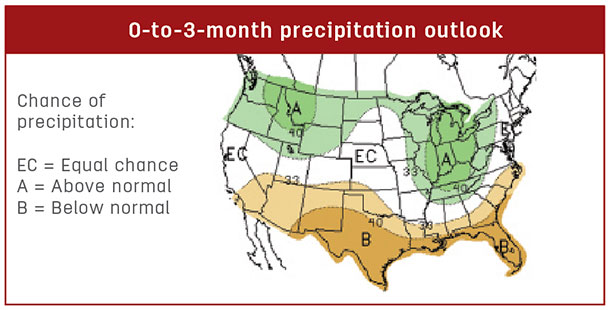Additionally, being prepared can make it much easier to deal with any challenges that do arise.
Heifers should be developed to at least 85 percent of their mature weight before calving. For example, if the heifer will mature into a 1,300-pound cow she should be at least 1,105 pounds at calving and in a body condition score of 6 or better.
Underfeeding heifers prior to calving can increase calving problems compared with heifers that are properly developed.
Prior to the start of calving season, it is wise to put together a toolbox that includes items that may be needed to help with calving and the management of newborn calves.

A basic list of items would include: a set of obstetrical (OB) chains, a set of OB handles, disinfectant, lubricant, an esophageal tube feeder and a quality source of colostrum.
A publication on when and how to properly assist a cow experiencing calving problems can also serve as a handy reference and reminder; print it out and put it with the calving chains. “Calving Time Management for Beef Cows” is one such publication that can be downloaded from the Oklahoma State University website.
Consumption of colostrum shortly after birth is critical to calf survival and health. During calving season, monitor newborns to ensure they are nursing. Ideally, calves should nurse within the first two hours after birth.
If calves have not nursed within the first six to 12 hours, provide assistance to ensure adequate consumption of colostrum; in some instances, you may want to provide colostrum sooner.
Commercial colostrum products vary in the amount of immunoglobulins they contain, so make sure to get a product that is designed for colostrum replacement and not just as a supplement.
A quality esophageal tube feeder (aka oral calf feeder) can be used to easily and quickly administer colostrum and other fluids to newborn calves.
When selecting a tube feeder, look for one that has a built-in vent or one that can easily be vented. One unique design is an oral bottle feeder that can serve as both an esophageal tube feeder or a traditional bottle. ![]()

-
Jason Banta
- Associate Professor and Extension Beef Cattle Specialist
- Texas A&M University
- Email Jason Banta










